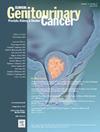The Role of Cytoreductive Nephrectomy in Contemporary Metastatic Renal Cell Carcinoma: An Other-Cause Mortality Match Population-Based Study
IF 2.7
3区 医学
Q3 ONCOLOGY
引用次数: 0
Abstract
Objective
A post-hoc analysis of CARMENA trial revealed that cytoreductive nephrectomy (CN) might still be beneficial for selected metastatic renal cell carcinoma (mRCC) patients. However, selection bias influences the choice of patients for CN, typically favoring those in better health and with a lower risk of all-cause mortality. We aimed to evaluate the impact of CN on cancer-specific mortality (CSM), using a cohort of mRCC patients matched for other-cause mortality (OCM).
Methods
The SEER database was queried to identify patients diagnosed with mRCC and treated with immunotherapy between 2010 and 2017. A Cox regression model calculating OCM was used to create a propensity score match cohort. Cumulative incidence curves depicted, and competing risks multivariable regression tested, the impact of CN versus no-surgery on CSM according to number of metastasis sites.
Results
Our match yielded to 1148 patients equally distributed between CN and no-surgery arm, with no difference in OCM (HR: 0.88, 95% CI: 0.53-1.47, P = .6). When stratifying patients for number of metastases sites, nonsurgery arm was associated with higher CSM rates for patients with 1 (HR: 1.93, 95% CI: 1.54-2.41, P < .001) or 2 sites (HR: 1.54, 95% CI: 1.27-1.86, P < .001). Conversely, no difference in CSM were observed for 3 or more sites (HR: 1.35, 95% CI: 0.93-1.97, P = .1).
Conclusions
In a matched cohort of mRCC patients treated with immunotherapy and comparable OCM risk, CN provided a CSM advantage for patients with up to 2 metastatic sites. This advantage was not observed in case of 3 or more sites.
细胞减减性肾切除术在当代转移性肾细胞癌中的作用:一项基于人群的其他原因死亡率匹配研究。
目的:CARMENA试验的一项回顾性分析显示,细胞减减性肾切除术(CN)可能仍然有利于转移性肾细胞癌(mRCC)患者。然而,选择偏倚影响了CN患者的选择,通常倾向于那些健康状况较好且全因死亡率风险较低的患者。我们的目的是评估CN对癌症特异性死亡率(CSM)的影响,使用匹配其他原因死亡率(OCM)的mRCC患者队列。方法:查询SEER数据库,以确定2010年至2017年间诊断为mRCC并接受免疫治疗的患者。使用计算OCM的Cox回归模型创建倾向评分匹配队列。根据转移部位的数量,描述了累积发生率曲线,并对竞争风险进行了多变量回归测试,CN与非手术对CSM的影响。结果:我们的匹配产生了1148例患者,平均分布在CN组和非手术组,OCM无差异(HR: 0.88, 95% CI: 0.53-1.47, P = 0.6)。当根据转移部位的数量对患者进行分层时,1 (HR: 1.93, 95% CI: 1.54-2.41, P < .001)或2 (HR: 1.54, 95% CI: 1.27-1.86, P < .001)患者的非手术组与较高的CSM发生率相关。相反,3个或更多位点的CSM无差异(HR: 1.35, 95% CI: 0.93-1.97, P = 0.1)。结论:在接受免疫治疗且OCM风险相当的mRCC患者的匹配队列中,CN为有多达2个转移部位的患者提供了CSM优势。在3个或更多站点的情况下,没有观察到这种优势。
本文章由计算机程序翻译,如有差异,请以英文原文为准。
求助全文
约1分钟内获得全文
求助全文
来源期刊

Clinical genitourinary cancer
医学-泌尿学与肾脏学
CiteScore
5.20
自引率
6.20%
发文量
201
审稿时长
54 days
期刊介绍:
Clinical Genitourinary Cancer is a peer-reviewed journal that publishes original articles describing various aspects of clinical and translational research in genitourinary cancers. Clinical Genitourinary Cancer is devoted to articles on detection, diagnosis, prevention, and treatment of genitourinary cancers. The main emphasis is on recent scientific developments in all areas related to genitourinary malignancies. Specific areas of interest include clinical research and mechanistic approaches; drug sensitivity and resistance; gene and antisense therapy; pathology, markers, and prognostic indicators; chemoprevention strategies; multimodality therapy; and integration of various approaches.
 求助内容:
求助内容: 应助结果提醒方式:
应助结果提醒方式:


